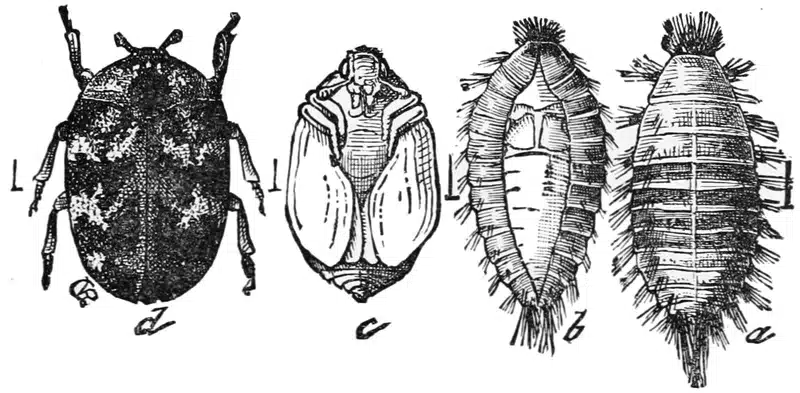Beetle larvae hide in soil, wood and even fabrics before they turn into the bugs we see. Spotting larvae early can save your lawn, garden or home from damage. In my years as a registered technician, I’ve learned that larval ID makes all the difference.
I’ve worked with termites, ants and roaches, but beetle larva calls come up less often. Still, our family business has trained me to recognize all insect stages. Proper ID leads to faster treatments and less damage for Virginia homeowners.
Coleoptera at a glance: scale, diversity & why beetle larva identification matters
Beetles (order Coleoptera) are the largest group of insects, with over 350,000 species worldwide. Their larvae feed on roots, wood, fabric and more. Early beetle larva detection stops small issues from turning into big repairs.
Complete metamorphosis: from egg to beetle larva to adult
All beetles go through four stages: egg, beetle larva, pupa and adult. This holometaboly separates feeding and growth from reproduction and dispersal. It’s similar to ants in Ant Lifespan: Development Stages and Treatment Tips or mosquitoes in Mosquito Lifespan & Life Cycle: What You Need to Know.
The egg stage: foundation for successful beetle larva development
Beetle eggs appear in soil, under bark or inside fabric seams. Environmental cues like moisture and soil warmth trigger egg laying. According to Virginia Tech Extension, Japanese beetle eggs hatch in about 10 days. Eggs often appear mid-July to early August in our region.
The larval stage: major body plans of beetle larva
Recognizing beetle larva body plans helps you ID the pest and plan treatment fast.
Scarabaeiform beetle larva (C-shaped grubs)
These C-shaped grubs have three pairs of legs and feed on plant roots. Look for them in lawns and flower beds. Examples include Japanese beetles and masked chafers.
Elateriform beetle larva (wireworms)
Wireworms are straight, hard-bodied larvae in soil. They chew roots and tubers. For more on wireworms, see the UC IPM guide on wireworm profiles.
Campodeiform beetle larva (ground beetle larvae)
Campodeiform larvae are flat, fast and predatory. They help control pests in soil by hunting other insects.
Vermiform beetle larva (legless forms)
Vermiform larvae look like maggots but belong to beetles. They live in sap or wood borers and lack distinct legs.
Triungulin stage (hypermetamorphic beetle larva)
Triungulins are the mobile first stage of blister beetles. They later shift to grub-like forms. Learn more about hypermetamorphosis in blister beetles at UWM’s Bug of the Week.
Universal morphology checkpoints for beetle larva identification
When you find a larva, check these key spots:
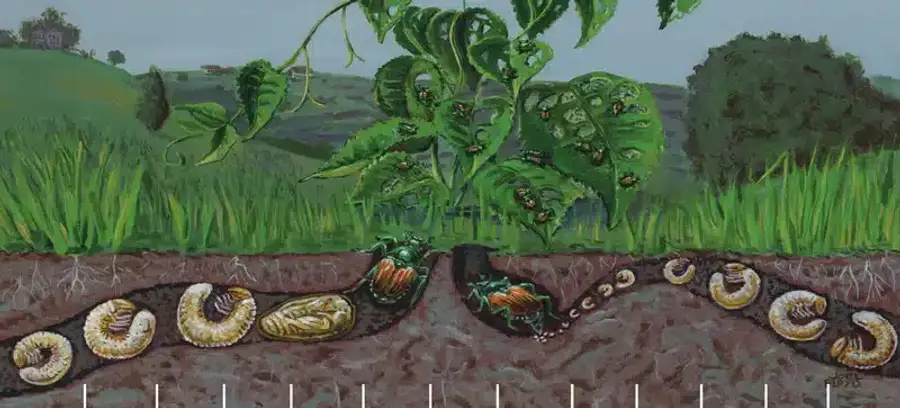
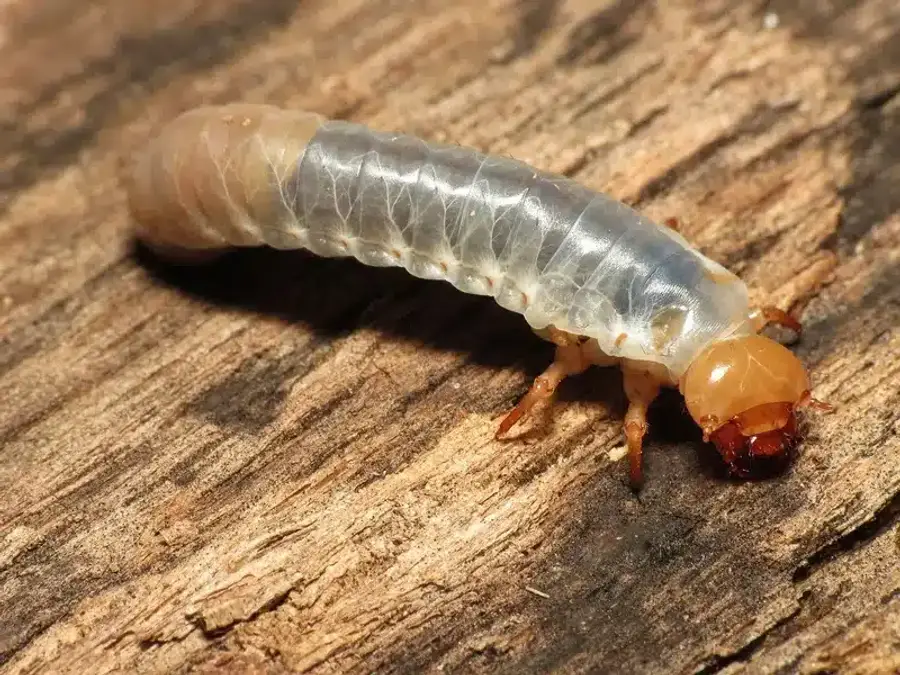
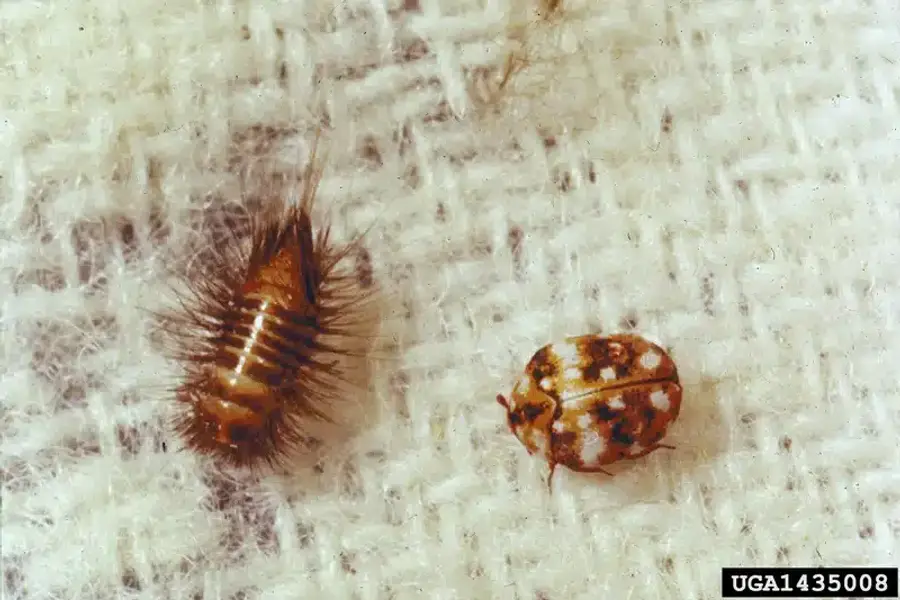
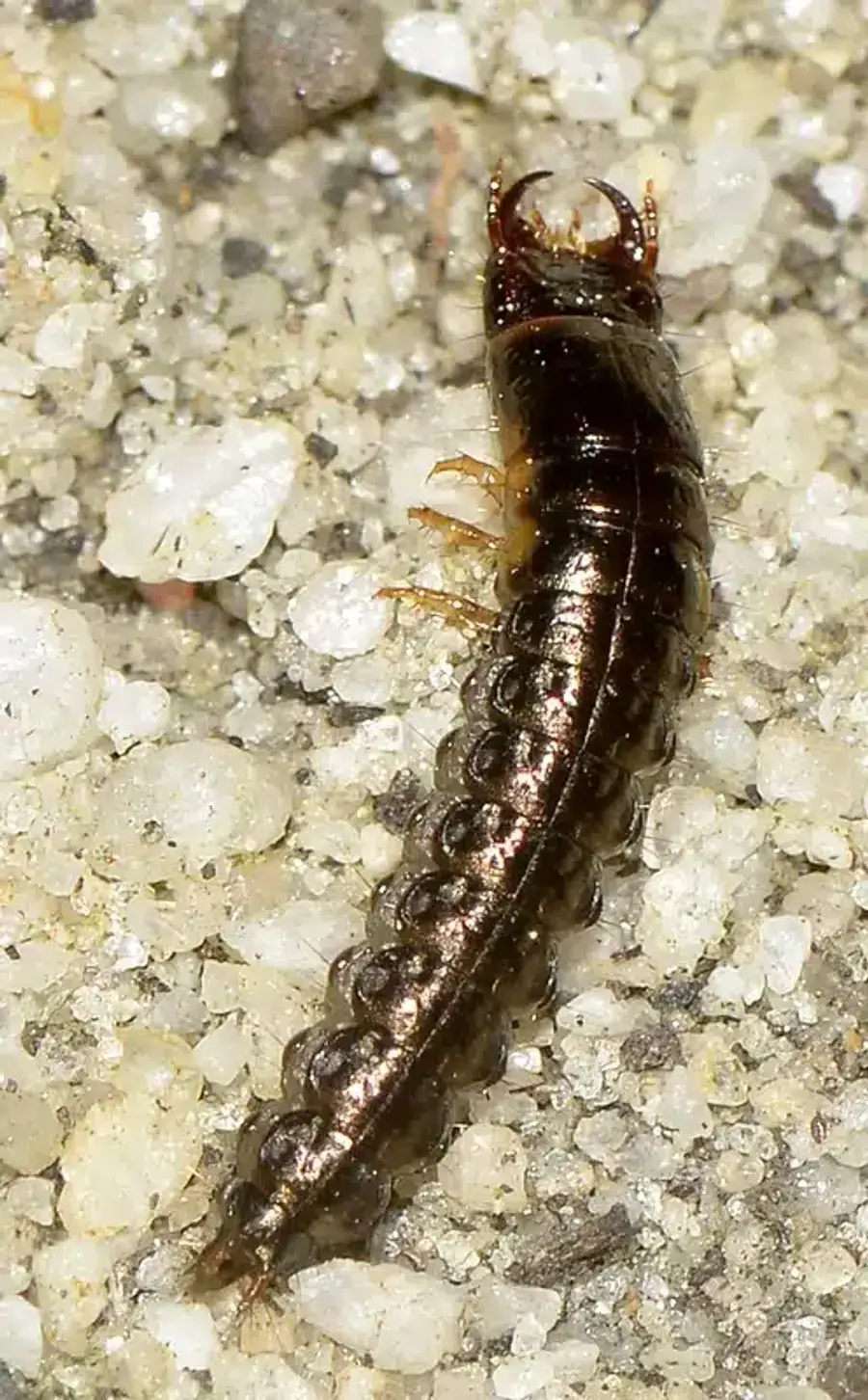
- Head capsule size and shape
- Number of thoracic legs and pro-legs
- Position and shape of spiracles
- Raster hair patterns and urogomphi
- Color and posture (straight vs. C-shaped)
Sampling & examination techniques for beetle larva
Inspect turf by cutting small soil squares and sifting. Peel back bark to find wood borers. Use a UV light and a hand lens to see tiny hairs. Preserve specimens by briefly boiling then storing in alcohol. For similar inspection tips, see What Do Mosquitoes Look Like?.
The pupal stage: transitioning from beetle larva to adult
Beetle pupae can be exarate (free limbs) or obtect (limbs glued to body). Some have decticous mandibles to chew out. You’ll find pupae in soil cells, wood galleries or inside cases.
The adult stage & emergence indicators for beetle species
Watch for exit holes in wood, canopy die-back on trees and frass piles on the ground. Mass flights of adults often follow larval feeding periods.
Environmental drivers of beetle larva development: temperature, moisture & photoperiod
Temperature and day length control larval growth and diapause. We use degree-day models in VA/MD/DC to predict when larvae will be active. Moist soil boosts grub survival, while dry soils slow larval feeding.
Key beetle families & their larvae in the Mid-Atlantic
Here are the main families to know for proper identification and timely action:
Scarabaeidae: white grubs (Japanese beetle, May/June beetles)
These grubs feed on roots from August through September. They resume feeding in spring when soil warms.
Buprestidae: emerald ash borer larvae
Emerald ash borers have cream-colored, flattened larvae with bell-shaped segments. They carve S-shaped galleries under ash bark, spending about 300 days across four instars (UF/IFAS monograph).
Cerambycidae: longhorned beetle larvae
Longhorn larvae tunnel deep in wood, molting up to 13 times. Adults exit through round, dime-size holes. Their life cycle can last 1-3 years.
Elateridae: wireworms (click beetle larvae)
These soil dwellers attack roots and seeds. They shine yellow-to-brown and range from 1/4 to over 1 inch long.
Dermestidae: carpet beetle larvae
Carpet beetle larvae are tear-drop shaped and covered in brown hairs with a tail of longer setae. They can molt more than 30 times indoors and leave damage on fabrics. Learn more in Carpet Beetle Bites: How to Know What’s Biting You and Signs of Carpet Beetles: How to Spot an Infestation. You can also check the University of Maryland Extension guide on these larvae (https://extension.umd.edu/resource/carpet-beetles).
Carabidae: ground beetle larvae (beneficials)
Ground beetle larvae hunt soil pests. They’re black with a red-yellow head and help keep other bugs in check.
Coccinellidae: lady beetle larvae (beneficials)
Lady beetle larvae look like tiny alligators. Their spiny bodies devour aphids and protect your plants.
Meloidae: blister beetle larvae (hypermetamorphosis)
Blister beetles start as agile triungulins, then become grub-like feeders. This odd lifecycle can delay some control measures.
Scolytinae: bark beetle larvae
Bark beetles carve tight galleries in tree bark. Look for sawdust-like frass around trunk bases.
Hypermetamorphosis & other developmental oddities in beetle larva
Beyond classic stages, some beetles switch forms dramatically, like blister beetles. These shifts matter for treatment timing because larvae in different stages need different controls.
Field phenology calendar for VA/MD/DC: beetle larva emergence & feeding windows
- Late Jun-Jul: adult Japanese beetles and early EAB larvae feed
- Aug-Sep: peak grub root-feeding across lawns
- Oct: grubs burrow deeper; wood-borer larvae overwinter
- Mar-Apr: ground beetle activity and grub surfacing
- May-Jun: pupation for many scarabs; first ALB adults may emerge
Common homeowner confusions: beetle larva vs. caterpillars, maggots & grubs
Caterpillars have more pro-legs and distinct hair tufts. Maggots (fly larvae) lack a firm head capsule and thoracic legs. Grubs are usually C-shaped with three pairs of legs. For general insect confusion, see Is a Spider a Bug? Clearing Up a Common Confusion.
Communicating beetle larva identification to homeowners: tips for technicians
Use plain language and clear photos when explaining larval finds. Note the host substrate—turf roots or wood. Emphasize how early detection cuts repair costs and stops spread fast.
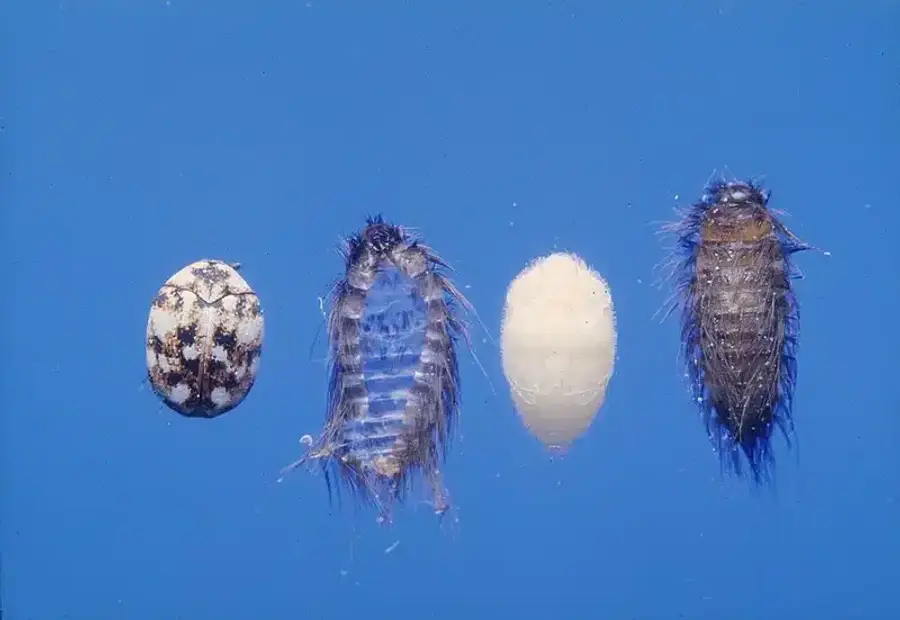
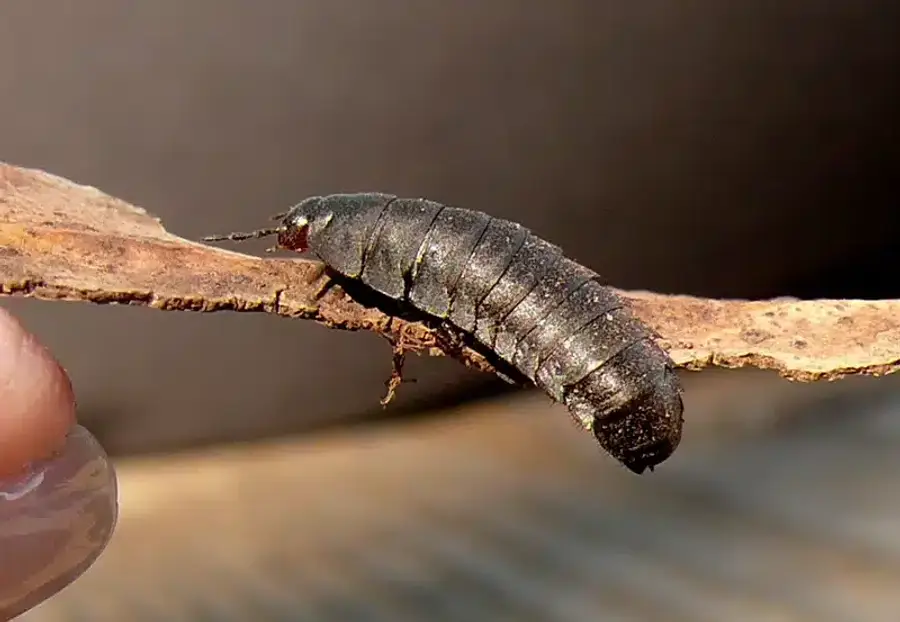
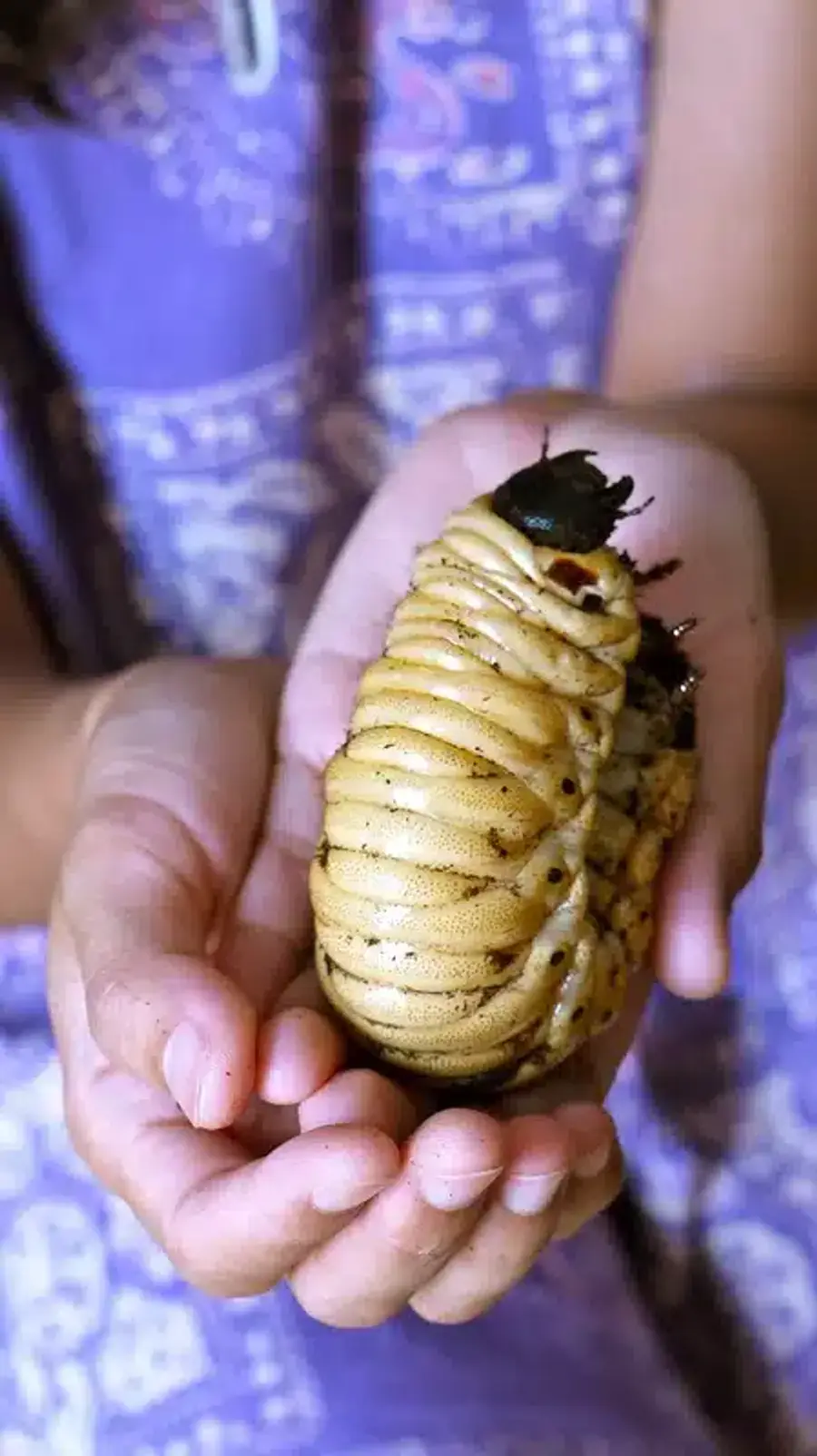
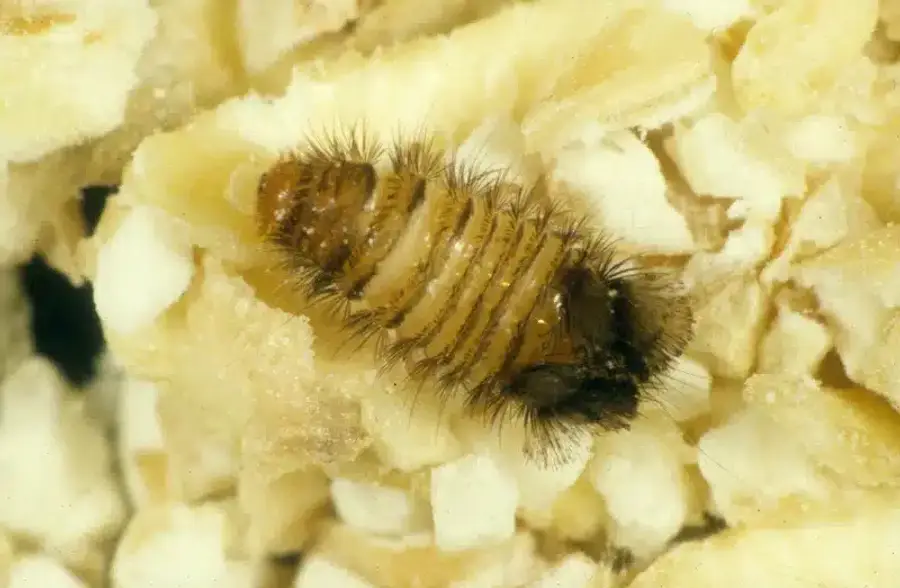
In my hands-on training and in-field work, I’ve seen how a quick ID leads to a targeted, effective treatment plan. All the products we use are EPA approved, having passed our internal research team. Each one is a product we’d feel comfortable using in our own homes.
Frequently Asked Questions
What does a beetle larva look like?
+
Beetle larva vary by family but often have a clearly defined head, a segmented body and three pairs of thoracic legs. Some are curved like grubs, while others are straight or flattened.
How can I tell if I have beetle larva in my yard?
+
Check for brown patches or wilting grass. Dig small soil samples near feeders and look for grubs. Use a hand lens to confirm head capsules and leg count.
Are beetle larvae harmful to my home?
+
Yes, some beetle larvae like wood borers can weaken beams. Carpet beetle larvae damage fabrics and stored goods. Early ID helps prevent bigger issues.
How do I treat beetle larva infestations?
+
Treatment varies by species. Soil insecticides help grubs. Wood treatments target borers. Indoor dermestid larvae respond to perimeter treatments and cleanup.
How long does the beetle larva stage last?
+
Larval duration ranges from weeks in some pests to over a year in species like emerald ash borer or blister beetles.
What's the difference between a beetle larva and a maggot?
+
Maggots (fly larvae) lack a hard head capsule and thoracic legs. Beetle larva have a visible head, defined body segments and legs.
How do I spot carpet beetle larvae indoors?
+
Look in dark corners, under carpets, near baseboards and in fabric folds. You might find small, hairy larvae or tiny shed skins.
With five years of hands-on experience in the pest control industry, George Schulz is a registered technician with the Virginia Pest Management Association and a proud third-generation professional in a family business that's been protecting homes for over 57 years. He manages and trains a team of service pros while also leading internal research efforts—recently spearheading a deep-dive review of thousands of documents on pest control materials to hand-pick the most kid and pet friendly, most effective solutions tailored specifically for homes in the DC metro area.
